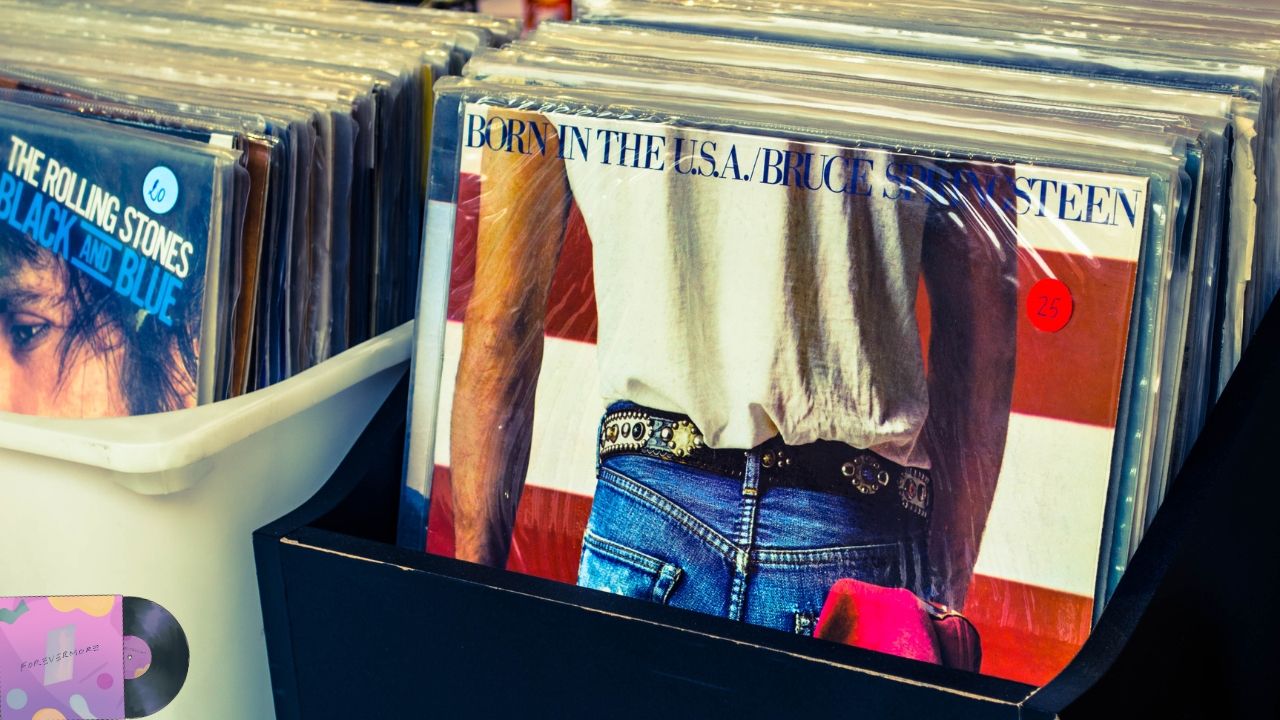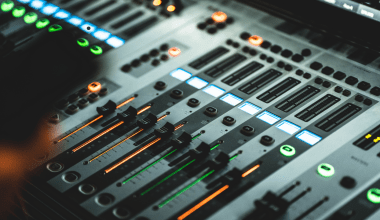Creating a music album cover is more than just slapping a picture onto a square. It’s an essential aspect of your music’s identity. The album cover is often the first thing people see before they even listen to your music. In this guide, we’ll explore how to create a music album cover that resonates with your music and grabs the attention of potential listeners.
Why is an Album Cover Important?
Before diving into the creation process, it’s crucial to understand why an album cover is important. An effective music album cover serves several purposes:
- Visual Representation: It visually represents your music and can give potential listeners a sense of the genre, mood, and style of your album.
- Branding: It helps in building your brand as an artist. A consistent style across your album covers can make you recognizable at a glance.
- Marketing: An eye-catching cover can attract more listeners, especially in the digital age where your music might be seen on streaming platforms like Spotify or Apple Music before being heard.
- Storytelling: Your album cover can tell a story, providing context or adding depth to your music.
Understanding how to create a music album cover that fulfills these roles is essential to making a lasting impression on your audience.
Step 1: Understand the Vision of Your Music
The first step in creating a music album cover is to understand the vision of your music. Ask yourself:
- What message or emotion do you want your album to convey?
- What are the key themes of your music?
- Who is your target audience?
Understanding the essence of your music will guide your design choices and ensure that your album cover aligns with your music. When learning how to create a music album cover, it’s important to keep this vision at the forefront of your design process.
Step 2: Choose the Right Style
There are various styles you can choose for your music album cover. The style should reflect the genre of your music and your artistic persona. Here are a few styles to consider:
- Minimalist: Clean, simple designs that use a lot of white space and minimal elements.
- Abstract: Using shapes, colors, and patterns that may not directly relate to the music but evoke a certain feeling or mood.
- Illustrative: Custom illustrations or drawings that represent the music or its themes.
- Photography: Using a powerful image that captures the essence of your music.
- Typography-focused: Design that primarily uses text to create an impact.
Choosing the right style is a crucial step in understanding how to create a music album cover that truly represents your work.
Step 3: Select a Color Scheme
Colors play a significant role in design, and your music album cover is no exception. The color scheme should complement the style of your music and the overall feel you want to convey. Here’s how to choose a color scheme:
- Emotion: Different colors evoke different emotions. For instance, red can evoke passion or energy, while blue can be calming or melancholic.
- Contrast: High-contrast color schemes can make your album cover stand out, especially on digital platforms.
- Harmony: Make sure the colors you choose work well together and don’t clash.
Selecting the right colors is an essential part of how to create a music album cover that appeals to your audience and enhances your music’s message.
Step 4: Decide on the Main Image
The main image on your music album cover should be something that instantly grabs attention. It could be:
- A portrait of yourself or your band.
- An abstract or symbolic image related to your music.
- A photograph that represents the theme of your album.
- An artistic illustration or painting.
The main image is the focal point of your album cover, so choose something that resonates with your music and will capture your audience’s attention. When learning how to create a music album cover, this is one of the most critical decisions you’ll make.
Step 5: Incorporate Typography
Typography is not just about choosing a font; it’s about ensuring the text on your music album cover is readable, balanced, and aesthetically pleasing. Consider the following:
- Font Style: Choose a font that matches the tone of your music. A heavy metal album might use a grungy, distorted font, while a pop album might use something sleek and modern.
- Size and Placement: The size of your text should be large enough to be readable, even as a thumbnail. Placement should be thoughtful – don’t let the text obscure the main image.
- Contrast with Background: Ensure there’s enough contrast between your text and the background so it’s easily readable.
Mastering typography is key when figuring out how to create a music album cover that is both attractive and functional.
Step 6: Pay Attention to the Details
Small details can make a big difference in how polished your music album cover looks. Consider:
- Alignment: Keep your design elements aligned for a clean, organized look.
- Margins and Padding: Ensure there’s enough space around your text and images to avoid a cramped look.
- Layering: Use layers to create depth and dimension in your design.
Attention to detail is essential when learning how to create a music album cover that stands out in a crowded marketplace.
Step 7: Consider the Format and Dimensions
The format and dimensions of your music album cover are crucial, especially in the digital age. Platforms like Spotify, Apple Music, and YouTube have specific requirements for cover art dimensions:
- Square Format: Most platforms require album covers to be in a square format, typically 3000×3000 pixels.
- File Type: Use high-resolution files, preferably in JPEG or PNG format, to ensure your album cover looks good on all devices.
- Print Considerations: If you’re planning on printing physical copies of your album, ensure your design is suitable for high-resolution print.
Considering the technical aspects is a vital part of understanding how to create a music album cover that looks professional across all platforms.
Step 8: Use Design Software
To create your music album cover, you’ll need design software. Here are some popular options:
- Adobe Photoshop: Offers extensive tools for detailed and professional design work.
- Canva: User-friendly with many templates specifically for album covers, ideal for beginners.
- GIMP: A free alternative to Photoshop with robust features.
- Illustrator: Best for vector-based designs and illustrations.
Choosing the right tools is essential when learning how to create a music album cover that meets your artistic and technical needs.
Step 9: Get Feedback
Before finalizing your music album cover, get feedback from others. Share your design with friends, fellow musicians, or even your fan base. Ask for constructive criticism and consider their suggestions to refine your design.
Seeking feedback is a crucial step in mastering how to create a music album cover that resonates with your audience.
Step 10: Finalize and Export Your Design
Once you’re happy with your music album cover, it’s time to finalize it. Double-check everything:
- Are all the elements properly aligned?
- Is the text readable?
- Does the design reflect the essence of your music?
After making any necessary adjustments, export your album cover in the required formats and resolutions. This final step in how to create a music album cover ensures your design is ready for distribution.
Tips for a Successful Album Cover Design
- Be Consistent with Your Branding: If you already have a logo, specific colors, or fonts associated with your music, incorporate them into your album cover to maintain consistency.
- Think About Your Audience: Design your music album cover with your target audience in mind. What appeals to them? What will catch their eye?
- Stay True to Your Music: While it’s important to create an attractive album cover, it’s even more important that it accurately represents your music. Don’t sacrifice authenticity for aesthetics.
- Research Trends: Look at recent album covers from artists in your genre. This can inspire your design and ensure it resonates with current trends.
- Avoid Clichés: While it’s okay to draw inspiration from other album covers, strive to create something unique that stands out.
These tips are vital for anyone looking to master how to create a music album cover that is both visually appealing and true to their artistic vision.
Common Mistakes to Avoid
- Overcomplicating the Design: A cluttered album cover can be overwhelming. Stick to a few key elements that represent your music.
- Ignoring Readability: If your text isn’t readable, especially as a thumbnail, it could deter potential listeners.
- Low-Quality Images: Always use high-resolution images to avoid pixelation, especially if you plan to print your album covers.
- Forgetting About the Back Cover: If you’re producing physical copies, don’t neglect the back cover. It should complement the front cover and include essential information like tracklists and credits.
Avoiding these common pitfalls is crucial when learning how to create a music album cover that successfully represents your music.
Final Thoughts
Creating a music album cover is an exciting part of the music production process. It’s your chance to visually express your music and connect with your audience before they even press play. Take the time to design a music album cover that you are proud of, and that will make listeners want to dive into your music. Understanding how to create a music album cover that not only catches the eye but also resonates with the themes and emotions of your music is a valuable skill for any artist.
For further reading, explore these related articles:
- Top Music Distribution Companies in India
- How Does Music Distribution Work?
- Create a Music Band Website
For additional resources on music marketing and distribution, visit Deliver My Tune.






